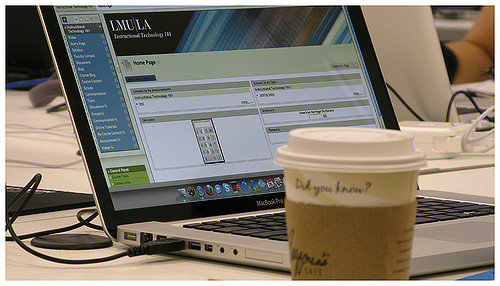Interview: Marie R. Kennedy and Cheryl LaGuardia on effectively promoting electronic resources
In this interview, Marie R. Kennedy and Cheryl LaGuardia discuss the new second edition of their ALA Neal-Schuman book Marketing Your Library's Electronic Resources: A How-To-Do-It Manual for Librarians.
 The first edition has been one of our bestsellers. Why did you write a second edition, and what are some of the most useful updates?
The first edition has been one of our bestsellers. Why did you write a second edition, and what are some of the most useful updates?
We learned so much from our readers about their experiences using the first edition that we wanted to incorporate all that feedback and share it widely. In the first edition our readers found the marketing plan reports we included very helpful – in this edition we've added some more. To help you get moving on your own marketing plans faster we've created a downloadable template. Grab it, use the prompts to consider the essential steps in a marketing plan, and get going!
One of the central themes in your book is that libraries should focus on value rather than ROI (return on investment). Would you explain the differences between them and why value should take precedence?
We think about marketing as having an ongoing conversation with our patrons, and this book acts as a guide to help you start the conversation at your own library. It guides you to consider what you already know about your patrons, and how to find out more about them and their needs. As a result of your efforts, imagine how satisfied and empowered a patron will feel when your library supplies them with just the right electronic resource. Meeting (or exceeding!) the needs of our patrons is value; we're not too interested in trying to place a business construct on institutions that are inherently not businesses (ROI).
What are some key questions that libraries need to ask when they first enter the planning stage?
There are some big questions to ask at the planning stage, and we encourage you to think about them as part of a team. We know that marketing works best when it is embedded in the culture of a library. You've likely heard the old saying, "Marketing is far too important to be left to the marketing department." Marketing can turn a traditional administrative hierarchy on its head, empowering staff (not just administrators) to speak for the library. Once you have your team in place you'll need to identify what the purpose of starting down a communication path will mean for your library, what are the goals you have in mind, who will be involved, how you will complete the work, and how you will determine if you've done a good job.
You have a chapter subtitled "Lather, Rinse, and Repeat." Once you have a marketing plan in place, why is important to keep revising it?
We're learning every day, and our patrons are changing every day. At the end of a marketing cycle it's important to pause, consider what we've learned, and how we can improve in the future. We then put that reflection into action in a new marketing plan.
What are a few trends in electronic resources that you think will be the most important in the next five years?
Here's our take:
- There's a greater emphasis than ever before on demonstrated value to researchers. Very few libraries can afford "luxury titles" any longer. If the product doesn't have immediate value to primary users, libraries won't acquire it. This has major implications both for the design of electronic products and for their marketing.
- If subscription e-resources are not being used sufficiently by primary clientele, they're not going to be continued; trials and deaccessioning will increase to sort the e-wheat from the e-chaff.
- Resource information provenance is key; libraries and our researchers want to be able to judge the validity of resources in the tighter, more competitive market.
- On a related note, libraries want greater transparency in aggregated content, and to keep up companies who want to survive will have to provide it. Libraries are less inclined simply to accept whatever product a company is willing to make available or sell to them, and product usage segmentation is becoming more of the practice, rather than a "take the one size fits all" package. This is an area in which savvy companies can prevail over the competition if they but have the smarts to create more individually-tailored products.
- Mobile access is simply being demanded by digital natives, and companies will have to redesign interfaces for excellent mobile device access to survive.
